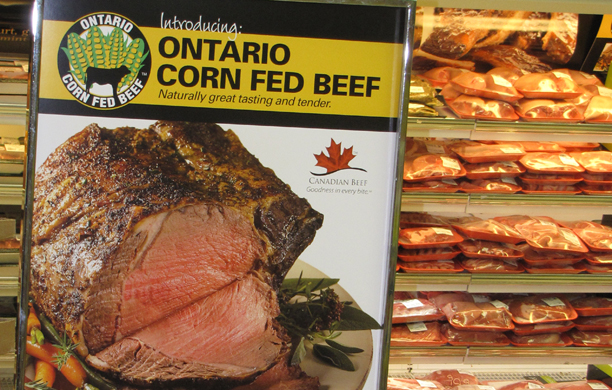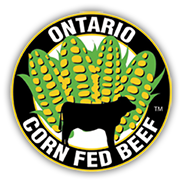
Safety important but room for brand recognition growth, survey shows
Food safety is top of mind for most retail and food service buyers of Ontario beef, but there are differences in who they think should be responsible for ensuring it.
And that’s where there could be opportunity for the Ontario Corn Fed Beef brand, according to a business-to-business research recently completed by Strategic Research Associates for the Ontario Cattle Feeders’ Association.
The research included confidential interviews with senior level managers at major Ontario grocery distributors and retail and food service chains, as well as store level managers and butchers.
The goal was to measure their awareness, attitudes and perceptions of food safety, including the risk of E. coli O157, and the value of reducing that risk before slaughter.
This research is part of a three-year project that also includes a baseline attitude study of consumer awareness of Ontario Corn Fed Beef and their interest and willingness to pay for the integration of E. coli O157 risk reduction tools into the branded program.
Research results showed that retailers generally place the onus of food safety in beef on the processing sector, expecting that they will have processes in place to eliminate or at least vastly reduce any potential food safety risks. There is, however, an opportunity for those supplying beef to specialty markets to improve their food safety assurances. It is this customer segment, which buys mostly from smaller, independent providers of specialty products, that largely depends on their suppliers to ensure food safety.
That could include anything from improving internal food safety processes and procedures to sourcing beef from cattle that are part of on-farm E. coli O157 reduction initiatives, such as a vaccination program.
Our research also asked respondents about their awareness of Ontario Corn Fed Beef, and here, too, there are opportunities for expansion. The brand is building a growing partnership with Loblaw’s. Many smaller, independent grocery stores also proudly carry Ontario Corn Fed Beef, albeit for a variety of reasons. Some value the guarantee of “grown in Ontario” and that they’re supporting Ontario farmers. Others are convinced that corn-fed beef is superior in quality and some are more interested in the quality assurance attributes it carries by virtue of being part of a program with specific production criteria.
Quick service national chains like Wendy’s, McDonald’s and Burger King have very little awareness of the Corn Fed Beef brand. They also have a vast array of checks and balances in place across their entire chain from beef to burger so they are not as concerned with any additional safety attributes the brand might provide.
Niche fast food restaurants focusing on premium ingredients and an improved dining experience are a small but growing market. They lack the quality control infrastructure of their larger, national competitors and rely on finding a supplier who can meet their needs in this area. Although they currently lack knowledge of Ontario Corn Fed Beef, they are very keen on attributes like local and fresh and are generally interested in learning more about the brand.
In the food service supply sector, the concept of corn-fed beef is not yet one that is widely understood so for most companies, it does not factor into their purchasing decisions. As well, a large segment of their customer base consists of public sector institutions such as hospitals, long-term care facilities, schools, universities and correctional facilities. While they are increasingly focusing on sourcing local products, they are often faced with strict budget limitations so price is their primary concern when buying beef.
What this research shows us is that while we’re doing a good job with independent retailers and our large retail chain partner, we have opportunities to continue to expand our brand in other segments of the market. This includes ongoing promotion of what Ontario Corn Fed Beef is and what it offers to our existing buyers, as well as reaching out to potential new customers like specialty quick service restaurants looking for ways to differentiate themselves from their competition.
More information about this survey is available by contacting the OCFA. Funding for this project is provided in part by Agriculture and Agri-Food Canada through the Canadian Agricultural Adaptation Program (CAAP).
